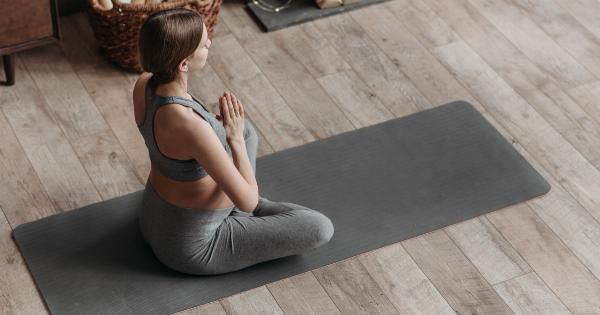Exercise is an important component of health and wellness, but when it comes to pregnancy, it becomes even more critical.
Prenatal exercise benefits both mother and baby by decreasing the risk of complications, ensuring a healthier pregnancy, and aiding in the postpartum recovery process. Nonetheless, expectant mothers have many questions about exercising during pregnancy, so we’ve compiled a list of the most frequently asked questions below to help you exercise safely and confidently during this phase of life.
1. Is It Safe to Exercise While Pregnant?
Yes, it is entirely safe for most women to exercise during pregnancy, and it is even recommended. Nevertheless, you should always speak with your doctor or midwife about your specific case.
The type, intensity, duration, and frequency of exercise that is appropriate for each woman will vary depending on her age, health, and stage of pregnancy. The American College of Obstetricians and Gynecologists’ general guideline is that pregnant women should aim for 150 minutes of moderate-intensity aerobic exercise per week and perform strengthening exercises two or three days per week.
2. What are the Benefits of Exercising During Pregnancy?
Regular exercise during pregnancy has several benefits, such as:.
- Reducing the risk of gestational diabetes, preeclampsia, and cesarean delivery
- Improving maternal cardiovascular and muscular fitness, mood, and sleep
- Facilitating fetal growth and development
- Speeding up postpartum recovery
3. What Types of Exercises Are Safe During Pregnancy?
Almost all kinds of physical activity are safe during pregnancy, such as:.
- Walking
- Swimming and aqua aerobics
- Cycling on a stationary bike
- Pilates, yoga, and strength training with light weights or resistance bands
- Dancing, aerobics, and other group exercises that do not involve contact or jumping
Nonetheless, high-impact exercises, competitive sports, and activities with a high risk of falling or abdominal trauma, like horseback riding or skiing, should be avoided.
Be sure to consult with your healthcare provider before starting a new exercise program or adjusting an existing routine.
4. What Precautions Should I Take When Exercising During Pregnancy?
When exercising during pregnancy, keep the following in mind:.
- Stay hydrated by drinking plenty of water before, during, and after exercise
- Wear comfortable, breathable, and supportive clothing and footwear
- Avoid overheating by exercising in a cool, well-ventilated, and shaded area
- Modify or avoid exercises that cause discomfort, pain, breathlessness, or muscle fatigue
- Avoid lying on your back after the first trimester to prevent supine hypotensive syndrome
- Breath correctly and control your movements to reduce the risk of injury or strain
5. Can I Continue Exercising If I Have Pregnancy-Related Health Problems?
Depending on your health condition and its severity, you may need to adjust or stop exercising during pregnancy. Some conditions that may affect your exercise routine include:.
- Gestational diabetes
- Preeclampsia
- Placenta previa
- Cervical incompetence
- Preterm labor
Consult with your healthcare provider to determine the best course of action for your specific situation.
6. When Should I Stop Exercising During Pregnancy?
If you experience any of the following symptoms during or after exercise, it is advised to stop exercising and seek medical attention:.
- Vaginal bleeding or spotting, or a sudden increase in discharge
- Abdominal pain or cramping
- Dizziness, faintness, or a rapid heartbeat
- Shortness of breath, chest pain, or nausea
- Headache, vision changes, or swelling in the face or hands
In general, it is safe to exercise during pregnancy until the end of the third trimester if there are no medical contraindications or complications. However, you should always listen to your body and modify your workout as needed.
7. Will Exercising During Pregnancy Affect My Baby?
There is no evidence that exercising during pregnancy harms the baby.
In fact, research suggests that regular prenatal exercise can promote healthy fetal growth, reduce the risk of intrauterine growth restriction, and improve the baby’s brain development and lung maturity. Moreover, physically active mothers tend to have more resilient offspring, as exercise is known to have epigenetic effects on gene expression.
8. Can Exercise Induce Labor or Miscarriage?
Exercising during pregnancy will not cause labor to start prematurely or increase the risk of miscarriage unless you have underlying health problems or contraindications.
However, labor-inducing exercises, such as squats, lunges, or birthing balls, may be performed in the later stages of pregnancy to help prepare the body for delivery. As always, it’s best to consult with your healthcare provider to determine what’s appropriate for your physical condition.
9. Is it Okay to Lift Weights During Pregnancy?
Low weightlifting is safe and beneficial for most pregnant women, provided that it is done under the guidance of a qualified professional.
Strength training during pregnancy can help maintain muscle mass, strengthen your pelvic floor, and prepare your body for labor and delivery. However, high-intensity weightlifting, powerlifting, and strongman training should be avoided, as they may put too much strain on your joints and abdominals and increase the risk of injury or miscarriage.
10. What Are the Best Postpartum Exercises?
After giving birth, you will need to wait until your doctor gives you the green light to resume physical activity, especially if you had a cesarean delivery or experienced complications.
In general, you can start with low-impact exercises, such as walking, pelvic floor exercises, and gentle stretching, as early as a few days postpartum. As you recover, you can gradually increase the intensity, duration, and frequency of your workouts and incorporate strength training, cardio, and core exercises under professional supervision.
Conclusion
Exercising during pregnancy is a safe and effective way to maintain your physical and mental health, enhance your baby’s development, and prepare your body for labor and delivery.
By following the guidelines and precautions discussed above and listening to your body, you can enjoy a healthy and active pregnancy and contribute to a positive birth experience and postpartum recovery.
























